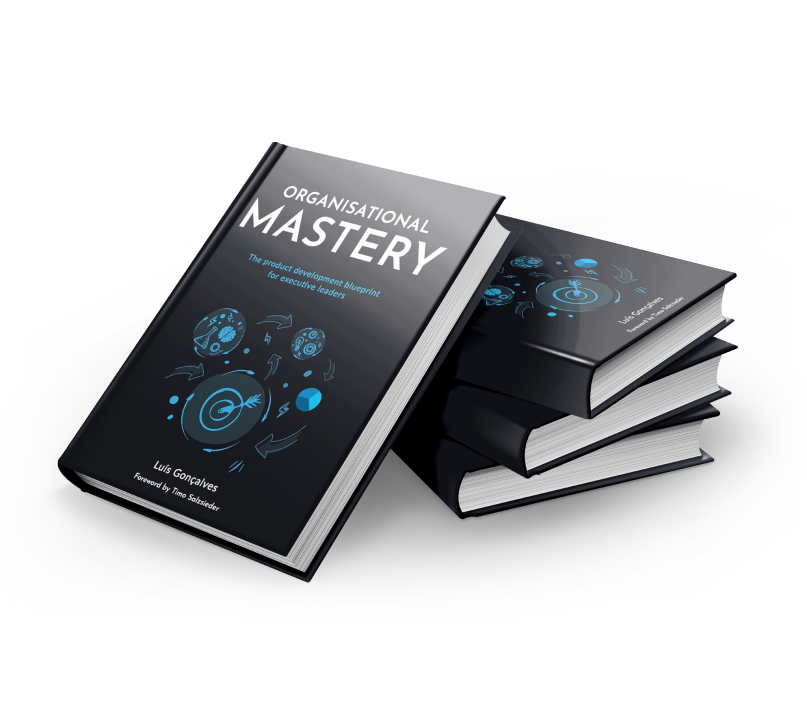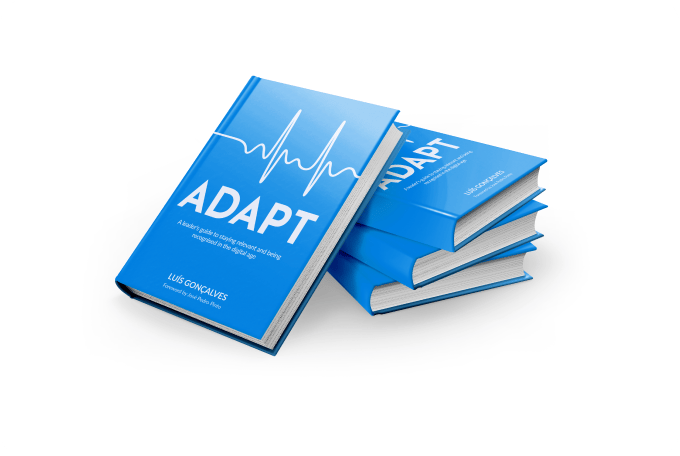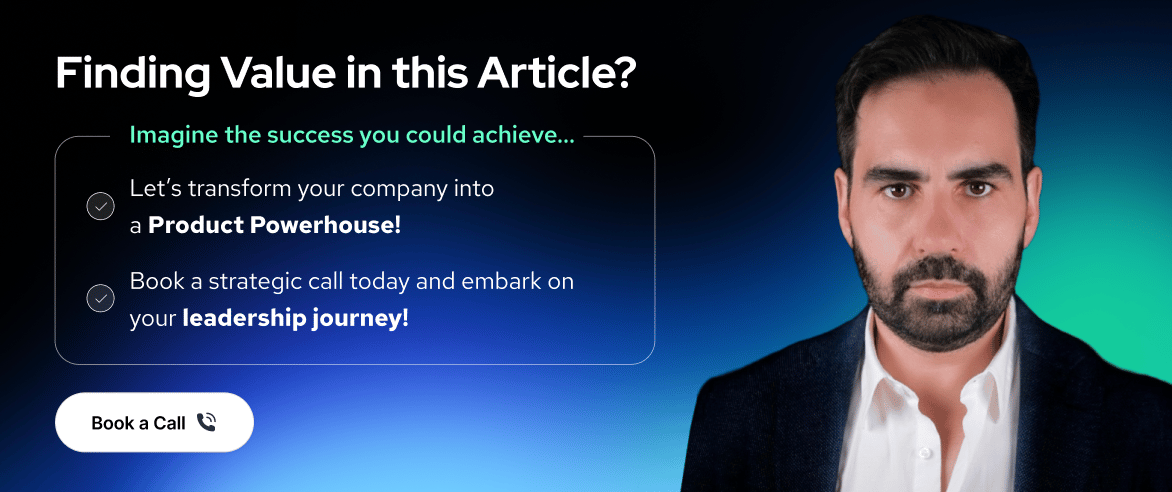Share this
Change management framework for organisational Insights
by Luis Gonçalves on Jan 13, 2024 6:17:07 AM
In the dynamic landscape of today's business world, successful project to product transformation necessitates more than just adept technical capabilities—it calls for a deep understanding of change management.
Knowing how to successfully implement and navigate change is crucial to ensure seamless transformation processes and to facilitate organizational resilience. This is where the value of a robust change management framework comes in.
The blog post we're delving into today explores the intricate dynamics of change management frameworks and their significance in gaining organizational insights.
The goal is to equip you with the knowledge and understanding necessary to drive effective change within your organization, particularly in the context of a project-to-product transformation.
Change is inevitable, and in the business world, it's a stepping stone to growth and innovation. However, unmanaged or poorly managed change can lead to chaos and resistance, causing potential setbacks in the transformation process.
This makes the mastery of a change management framework an essential asset, providing a structured approach to anticipate, plan, implement, and review change initiatives.
In this post, we will walk through the fundamental aspects of a change management framework, highlighting its critical role in successful project to product transformations.
Society changed and leaders need support in the way how they lead and design their digital product organizations, that is the reason why the ADAPT Methodology® was created, but now let’s get a deep dive into Communities Of Practice if you want to get a deeper knowledge about this topic.
Whether you're a change management veteran or new to the concept, our goal is to provide you with the insight and understanding necessary to lead your organization through change effectively. Join us as we explore this essential facet of business transformation.
Resisting the change is a natural reaction when you don´t involve people affected by the change. Jason Little wrote a book called Lean Change Management, this book shows how to implement successful change through examples of innovative practices that can dramatically improve the success of change programs in Digital Product Companies.
The Lean Change Management model consists of 3 parts: Insights, Options, and Experiments.
Insights are the first step of the Lean Change Management Model.
Insights can be generated from various practices or assessments, like Lean Coffee, Force Field Analysis, or Retrospectives. Read more about these practices here.
Generating Insights is not easy. People often need a structure, and a process to follow. And therefore Jason Little suggests that using frameworks is helping people gain input into a change plan.
Lean Change Management Frameworks
Kotter´s Model
Dr. John Kotter wrote a book "Leading Change", where he describes the 8-step process for leading change
- Create Urgency - "Urgency for change emerges through honest dialogue between people with different points of view", Jason states in his book.
- Form a Powerful Coalition - this simply means creating a team of change agents that facilitate the change. John Kotter recommends team members to rotate every now and then to bring a fresh perspective.
- Create a Vision for the Change - the vision must be specific, measurable, actionable, inspiring, and realistic. Think of the vision as a 30-second elevator pitch.
- Communicate the Vision - try visualizing your vision, this makes communication much simpler
- Remove Obstacles - when changing, people who are part of it need to feel they are supported. Making problems visible and tracking the issues helps people see that there is progress
- Create Short-Term Wins - this step talks about the risk of people falling back into old habits if they don´t see quick wins. A Kudo wall is a good way to start with.
- Build on the Change - when you experience small wins, you can easily intensify their impact
- Anchor the Change in Corporate Culture - when people incorporate the changes into their minds, then applying new practices is just a natural way to do it
McKinsey 7S framework
7S framework was created by Tom Peters and Bob Waterman in the 1980s. Peters and Waterman mentioned that if you want to analyze and solve organizational problems, you need to think about more than just the structure.
The structure is one of the factors of 7S framework.
They classified other six factors:
- Strategy
- Systems
- Skills
- Style
- Staff
- Shared values.
They divided these into hard and soft factors.
Hard factors:
- Structure
- Strategy
- Systems
Soft factors:
- Skills
- Style
- Staff
- Shared values
If you change one of the seven factors, it will impact the others. You have to then manage those impacts and make appropriate changes to bring all factors into alignment again.
Conclusion
Kotter´s model provides 8 steps - a list of ingredients you can use to lead a successful change recipe.
Jason, in his Lean Change Management, the book suggests to not go through these steps in a linear way, instead, he says to treat them as a guideline; a guideline that helps to direct the messy process.
McKinsey´s 7S model is a powerful framework to construct the dynamic elements of change and anticipate the ripples a change will create.
These frameworks, generally, help you understand how correlated today´s organizations are and what features must be present in your change strategy.
Lean Change Management cycle consists of three parts - Insights, Options, and Experiments.
Insights are the first step of this model and you can generate Insights by using the above-mentioned change management frameworks.
Did you like this article?
We enable leaders to become highly valued and recognized to make an impact on the World by helping them to design Digital Product Companies that will thrive and nourish in the Digital Age, we do this by applying our own ADAPT Methodology®.
If you are interested in knowing if you have what it takes to design and build a great digital product company simply take our Digital Leadership Influence Scorecard.
If you want to know how we can help you to start your transformation please check out our: Training.
If you are interested in doing a transformation in your company please check out our: Consulting.
Share this
- Agile Methodologies (18)
- Product Strategy (18)
- OKRs (16)
- Scrum (16)
- Product Mindset (14)
- Project To Product (10)
- Agile Retrospectives (9)
- CoPs (9)
- Knowledge Sharing (9)
- Time To Market (8)
- Product Discovery (7)
- Continuous Improvement (5)
- Strategy (5)
- Scrum Master (4)
- Content Marketing Strategy (3)
- Product Owner (3)
- Technical Excellency (3)
- Digital Transformation (2)
- Innovation (2)
- Scaling (2)
- Team Building (2)
- Business Model (1)
- Cost Of Delay (1)
- Customer Feedback (1)
- Customer Journey (1)
- Customer Personas (1)
- Design Thinking (1)
- Digital Leadership (1)
- Digital Product Tools (1)
- Go To Market Strategy (1)
- Google Design Sprint (1)
- Lean Budgeting (1)
- Lean Change Management (1)
- Market Solution Fit (1)
- Organisational Impediments (1)
- Outsourcing (1)
- Product (1)
- Product Metrics (1)
- Product Roadmaps (1)

Organisational Mastery
Get your free copy

ADAPT
Get your free copy

Product First
Get your free copy


